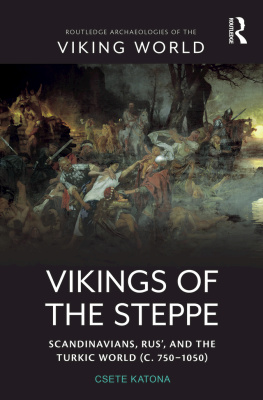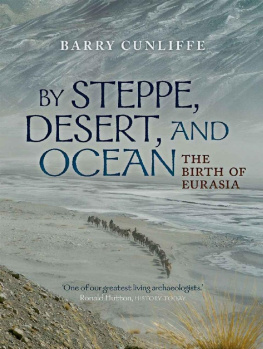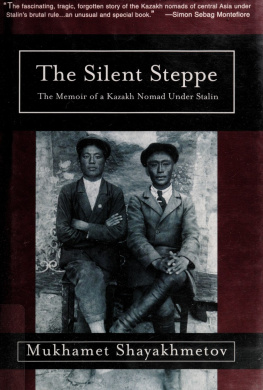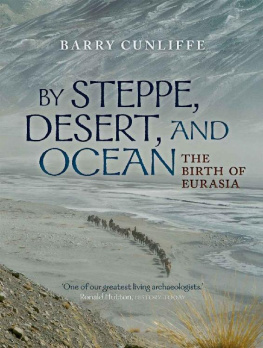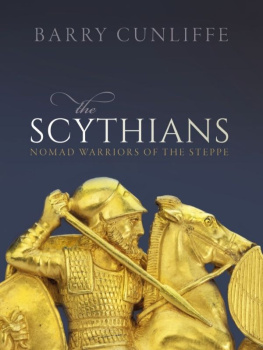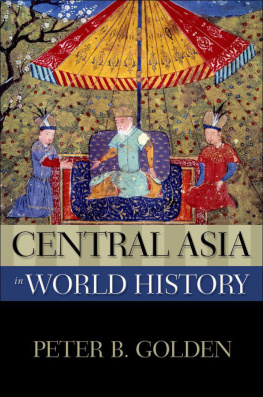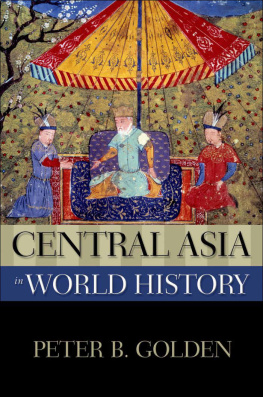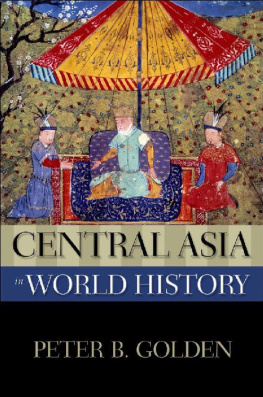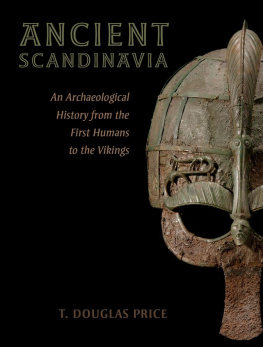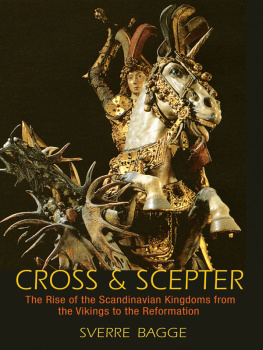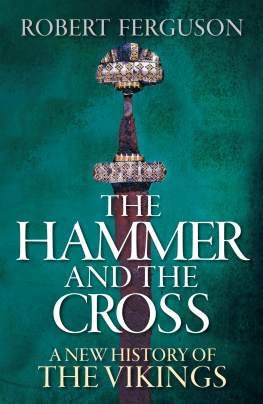Bookmarks
Pagelist
Guide

Vikings of the Steppe
This book explores the relationship between Vikings, Rus and nomadic (mostly Turkic) steppe dwellers during the course of the Viking Age (c. 7501050) in a geographical area stretching from Eastern Scandinavia through the Kievan Rus, Byzantium, the Islamic world to the Western Eurasian steppes.
The primary focus is the steppe influence on the development of ScandinavianRus culture. It illustrates the effects of Turkic (nomadic) cultures on the evolving Scandinavian-Rus communities in their military technology and tactics, as well as in everyday customs, ritual traditions and religious perceptions, whilst paying attention to the politico-commercial necessities and possible communication channels tying these two cultures, normally considered to be distinct, together. The arguments are supported by a multi-disciplinary analysis of diverse historical and archaeological materials occasionally supplemented with linguistic evidence. The result is a comprehensive evaluation of the relations of the Scandinavians active in the East with Turkic groups and brings the (so far neglected) steppes into Viking studies in general.
The book will fill a serious scholarly gap in the field of Viking studies and will be read by both academics and students interested in the archaeological and historical sources concerned with the traditions of the Eastern Vikings.
Csete Katona earned a PhD in History at the University of Debrecen. Currently, he is a PhD candidate at Central European University and employed as a research assistant at Pzmny Pter Catholic University. His research interest is the Vikings in the East, on which he has several publications in English and Hungarian.
Routledge Archaeologies of the Viking World
Series editors: Neil Price, Charlotte Hedenstierna-Jonson, and Ben Raffield

The editorial management of this book series is supported by the Swedish Research Council project The Viking Phenomenon (201500466).
Vikings are a perennially popular topic across a broad audience spectrum, from the general public to academics at all levels, but there are comparatively few book series dedicated to the steady flow of Viking-related archaeological texts. Routledge Archaeologies of the Viking World showcases the latest outputs of the professions brightest scholars, including established names but particularly acting as an outlet for the new generation of early career researchers.
The archaeological investigations of the Viking world within the series have a direct focus on the Scandinavians but also on the zones of cultural interaction that characterised their broad diaspora. The editors have particular interests in the eastern Viking Age, from European Russia to the Asian Steppe, the Arab world and beyond to the Silk Road and the Far East. This region is significantly underrepresented in new English-language publications, and books on this theme will become a hallmark of the series alongside western studies.
Viking Silver, Hoards and ContainersThe Archaeological and Historical Context of Viking-Age Silver Coin Deposits in the Baltic c. 800-1050Jacek Gruszczyski
Monarchs and HydrarchsThe Conceptual Development of Viking Activity across the Frankish Realm (c. 750-940)Christian Cooijmans
A Viking Market Kingdom in Ireland and BritainTrade Networks and the Importation of a Southern Scandinavian Silver Bullion EconomyTom Horne
Viking-Age TradeSilver, Slaves and GotlandEdited by Jacek Gruszczyski, Marek Jankowiak, Jonathan Shepard
Vikings of the SteppeScandinavians, Rus, and the Turkic World (c. 7501050)Csete Katona
For more information about this series, please visit: https://www.routledge.com/Routledge-Archaeologies-of-the-Viking-World/book-series/RAVW
Vikings of the Steppe
Scandinavians, Rus', and the Turkic World (c. 7501050)
CseteKatona

Cover image: Henryk Siemiradzki Warriors Battle Silistria. Artefact/ Alamy Stock Photo
First published 2023
by Routledge
4 Park Square, Milton Park, Abingdon, Oxon OX14 4RN
and by Routledge
605 Third Avenue, New York, NY 10158
Routledge is an imprint of the Taylor & Francis Group, an informa business
2023 Csete Katona
The right of Csete Katona to be identified as author of this work has been asserted in accordance with sections 77 and 78 of the Copyright, Designs and Patents Act 1988.
All rights reserved. No part of this book may be reprinted or reproduced or utilised in any form or by any electronic, mechanical, or other means, now known or hereafter invented, including photocopying and recording, or in any information storage or retrieval system, without permission in writing from the publishers.
Trademark notice: Product or corporate names may be trademarks or registered trademarks, and are used only for identification and explanation without intent to infringe.
British Library Cataloguing-in-Publication Data
A catalogue record for this book is available from the British Library
ISBN: 978-0-367-48075-2 (hbk)
ISBN: 978-1-032-34075-3 (pbk)
ISBN: 978-1-003-03785-9 (ebk)
DOI: 10.4324/9781003037859
Typeset in Times New Roman
by Apex CoVantage, LLC
Contents
Figures
Tables
Preface and acknowledgments
This book deals with the interactions of Scandinavians, Rus and the inhabitants of the steppes during the Viking Age (c. 7501050 CE). As these labels indicate, the geographic boundaries of the topic encompass (mostly) Eastern Scandinavia, Eastern Europe, the Baltics, European Russia and in a few cases even territories beyond. It is an immense challenge to present even parts of the history of roughly three centuries over such a vast territory and among such varied people, especially when the available evidence is so complex and exists in both material and written forms, the latter in a wide variety of ancient languages, including Arabic, Persian, Old Church Slavonic, Old Norse, Latin and Byzantine Greek. No researcher can be equally knowledgeable in all these types of sources; thus, it is necessary to explain my position and outline my intentions in writing this book.
Such a subject could have been addressed (and has previously been addressed by others) based on just one type of surviving evidence, from the viewpoint of various disciplines, or within a specific framework of Scandinavian, Russian or steppe history. Here, as a historian, I have aimed for a synthesis and attempted to establish a basic narrative. The primary goal was to bring the Western Eurasian steppes onto the horizon of Viking studies. This corresponds to my original background as a history student in Hungary, where studies of the steppe people occupy a prominent position in curricula, also to my training in Old Norse studies in Iceland and Denmark. Accordingly, the book presents a steppe perspective on the Viking diasporas and introduces this world to scholars working in related fields. This naturally means that some facts receive more attention than others in order to familiarize the reader with the situation. A reader coming from a different background may also find some useful information. The impact the steppe had on neighbouring cultures should appeal to scholars and students working on early Russian or Turkic steppe history. The various types of contacts among these groups deserve systematic treatment. The book admittedly has a Hungarian bias in the archaeological material, not only because I know this material the best and it is accessible to me but also because I feel able to extend the picture drawn by previous works on this topic, which were mostly case studies.

